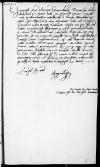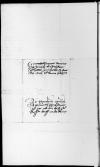Letter #121
Ioannes DANTISCUS to Sigmund von HERBERSTEINAugsburg, 1516-11-21
Manuscript sources:
Prints:
| ||||||
Text & apparatus & commentaryPlain textText & commentaryText & apparatus
Generoso et strenuo domino
Generose Domine, plurimam commendationem.
Ternas his diebus dedi ad Generositatem Vestram litteras[1], ex quibus, ut opinor, mentem meam abundanter intellexit etc. Accepi mandatum
Eiusdem Generositatis Vestrae obsequentissimus
[1] Perhaps Dantiscus is referring tothe letters marked as No. 1-2 and 4 in this edition. It is also possible that the expression his diebus refers to a time closer to the date of letter No. 5, and thus three letters unknown to us written after November 5, 1516 (the date of letter No. 4).
[2] About this imperial mandate cf. letters No. 2 and 3.
[3] Most likely
[4] Laurentius, see letter No. 2.
[5] This most probably refers to the memorandum on providing for Dantiscus, its receipt being the condition of the emperor granting him financial support (cf. letter No. 3). However, Dantiscus could be referring to the written request for the emperor’s mandate concerning punishment for
[6] Most likely an allusion to the two friends’ having fun with local puellae, also practiced in


 ONB, Cod. 13.597, f. 17v
ONB, Cod. 13.597, f. 17v